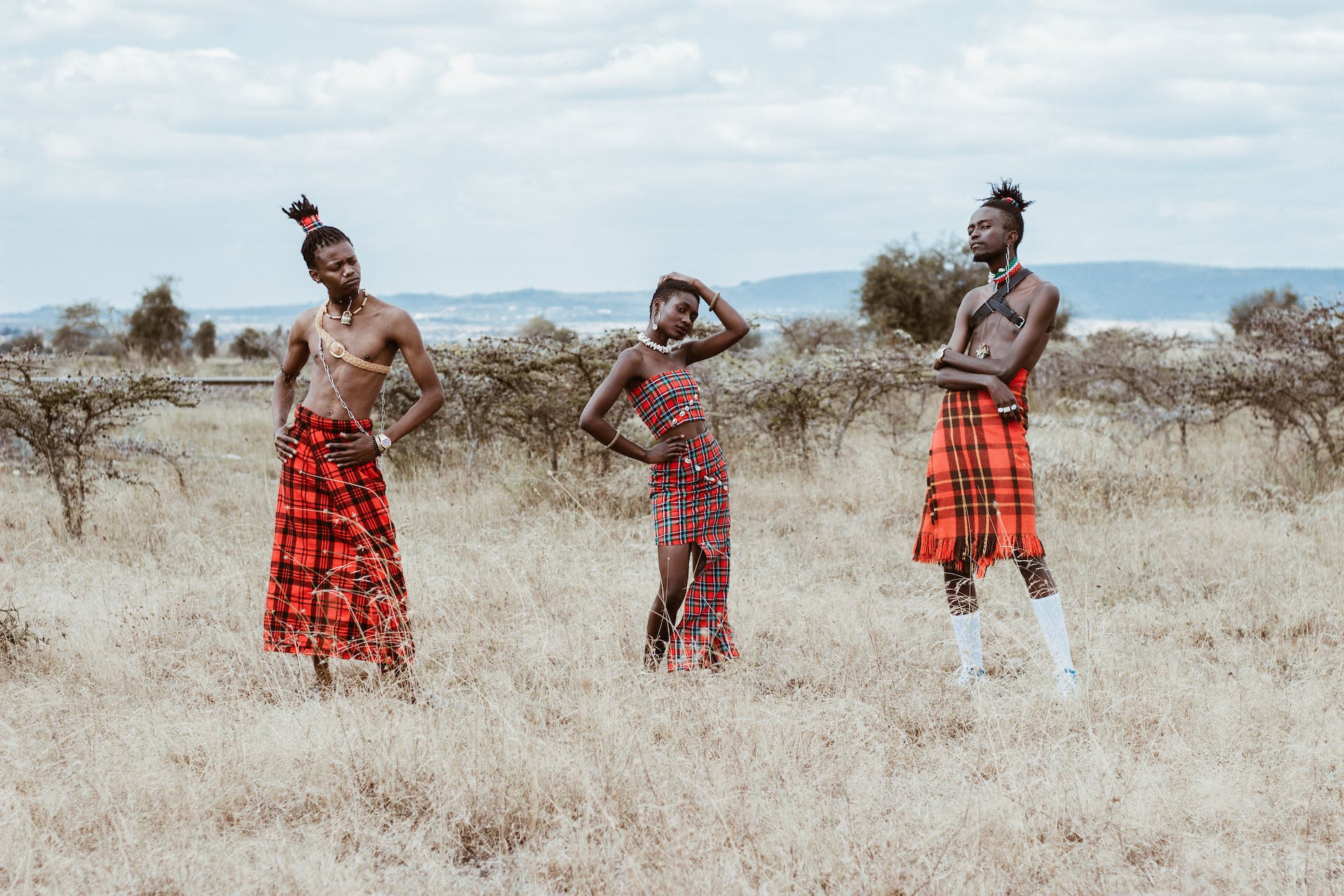Polynesia, a subregion of Oceania, comprises more than a thousand islands dispersed throughout the central and southern Pacific Ocean. Polynesia, renowned for its rich history, vibrant culture, and breathtaking landscapes, also possesses a fashion heritage that depicts its diverse traditions and modern influences.

Echoes of the Past: Traditional Polynesian Clothing
The tapa cloth, produced from the inner bark of the paper mulberry tree, is central to traditional Polynesian clothing. This fabric features intricate patterns that have been handed down through the generations. Each design contains symbolic meanings that tell tales of spirits, the natural world, and everyday life.
The preu is a versatile piece of fabric that is frequently seen in Tahiti and its adjacent islands. It can be wrapped around the body in a variety of ways. This garment is worn by both men and women and is both functional and aesthetically pleasing, often featuring floral or tribal patterns.
Lei is not only a flower garland, but also a significant item of Polynesian fashion, representing affection, celebration, and welcome. The donning of a lei, which may be made from flowers, leaves, or even shells and feathers, has cultural significance and is integral to celebrations and ceremonies.
Modern Polynesian Fashion: A Blend of the Old and New
- Polynesian fashion has evolved in modern times, with designers deriving inspiration from the past and fusing it with contemporary styles.
- Today's Polynesian youth frequently combine western-style apparel with traditional elements. Symbols or traditional Polynesian tribal tattoos may be featured on graphic T-shirts. Likewise, contemporary dresses and skirts may incorporate traditional patterns or materials.
- Polynesian-inspired designs have reached the international catwalk. The use of tapa cloth patterns, colorful floral motifs, and other Polynesian elements in haute couture demonstrates the international appeal of these designs.
- Tattoos: While not 'fashion' in the conventional sense, Polynesian tattoos are an integral part of the region's aesthetic identity. These tattoos, which are profoundly rooted in tradition, are not merely ornamental but also carry personal meanings and stories. These patterns are frequently worn by contemporary Polynesians as a badge of pride and identity, signifying their connection to their heritage.

The International Impact of Polynesian Fashion
Polynesian fashion elements have made their way into international wardrobes due to globalization and the interconnectedness of the modern world.
- Polynesian fashion is ideal for resort wear because of its vivid, vibrant patterns and lightweight materials. Global brands have implemented designs inspired by Polynesia into their collections, particularly for beach and vacation lines.
- Several global celebrities have incorporated Polynesian patterns, tattoos, and designs, thereby increasing their popularity. Their influence has introduced Polynesian fashion elements to their devotees around the world, demonstrating its universal appeal.
- Sustainability: As the global fashion industry shifts towards sustainable practices, the traditional Polynesian methods of clothing construction, which rely predominantly on natural materials and dyes, have regained significance.
Conclusion
Polynesian fashion is a gorgeous tapestry of the rich history, traditions, and modern influences of the islands. As the world becomes more globalized, the distinctive combination of traditional and modern Polynesian styles offers a refreshing, vibrant, and significant alternative to mainstream fashion. Whether it is the symbolic tattoos, the intricate patterns on tapa textiles, or the contemporary interpretations of these designs, Polynesian fashion continues to captivate, inspire, and resound across borders.

Our Top FAQs
What significance do the patterns on tapa textile hold?
Tapa cloth patterns are profoundly rooted in the culture and history of Polynesia. Often derived from ancient legends, natural elements, daily life, or gods, each pattern or symbol conveys a story. The transmission of these designs from generation to generation ensures the preservation of cultural narratives and traditions. When observing a tapa cloth, one is not only viewing a decorative object, but also a tapestry of Polynesian stories and beliefs.
What distinguishes the preu from the sarong?
While the preu, which is popular in Tahiti, and the sarong, which is popular in Southeast Asia, may appear similar, their cultural origins and significance are distinct. Although both are versatile pieces of fabric draped around the body, their designs, patterns, and customary applications may vary. The preu plays a vital role in Polynesian fashion and identity, as it frequently features vibrant floral or tribal patterns.
Are Polynesian tattoos exclusive to particular individuals?
Yes, Polynesian tattoos are highly personalized and frequently bear individual meanings. There are common symbols and patterns, but the arrangement, size, and complexity of tattoos can vary to reflect personal histories, lineage, or significant life events. Before having a traditional Polynesian tattoo, it is essential to comprehend its significance and, if possible, consult with a local tattoo artist who is knowledgeable about the culture.
What effect has globalization had on traditional Polynesian fashion?
Globalization has expanded the audience for Polynesian fashion by incorporating its elements into conventional and high fashion. This publicity has been a two-edged sword. It has resulted in appreciation and global popularity, but there is a danger of cultural appropriation or dilution of traditional meanings. Nonetheless, many Polynesian designers ensure that the essence of their culture is preserved despite their innovative nature.
Is there a sustainable element to Polynesian style?
Without a doubt! Traditional Polynesian fashion relies heavily on natural materials such as tapa cloth made from the bark of the paper mulberry tree and natural dyes for coloration. As the global fashion industry shifts towards sustainability, these eco-friendly, traditional crafting techniques acquire renewed importance, demonstrating a blend of culture and environmental awareness.
Leave a comment